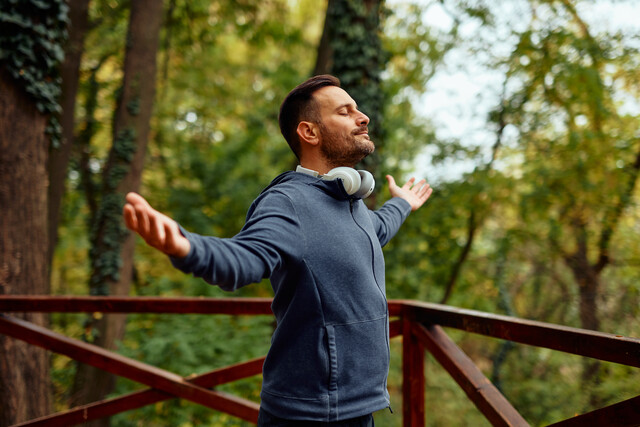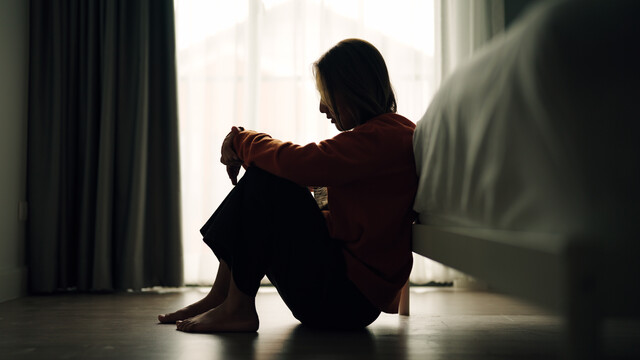Objectives
In this article, you will become familiar with individuals over the years that have used affirmations to better their own lives, and have helped to popularize their use today. We will also examine what it means to heal, and how that can sometimes be different than curing a specific ailment.
Introduction
While some may consider the use of affirmation to be a recent "new age" invention, the theory of positive thought has been employed throughout history, and it has reemerged as a means of self development and wellness in the early 20th century. While not always accepted in mainstream circles, there are many case studies of successful use of affirmations to improve health, increase creativity, and attract abundance, as will be illustrated below.
Using positive thought to bring about a desired outcome has been used throughout history by philosophers and natural healers. In modern times, the most famous proponent of using affirmations is Napoleon Hill, the author of "Think and Grow Rich," published in 1937.
Still popular today, the book details the secrets that Hill discovered by interviewing over 500 successful men of his time. A common thread in all of the stories was that the men focused - almost single mindedly - on a goal and expended all of their thought in its pursuit. Most importantly, the men in question were in no doubt that they would eventually meet their goals. In his book, Hill states that having a clearly defined desire and using journaling, creative visualization, and affirmations were the main secrets to their success.
Napoleon Hill is generally regarded as the modern father of positive thought and affirmations. His book has been devoured by people the world over, with more than 20 million copies sold at the time of his death in 1970. Although primarily focused on attracting wealth, the principles Mr. Hill teaches can be used to attain anything, even good health.
Louise Hay
Another, more recent pioneer in using affirmations specifically to heal the body is Louise Hay. In her youth, Louise was a victim of rape and abuse, was forced to drop out of high school due to a teenage pregnancy and later suffered a broken marriage. Having already experienced so much pain, Louise was later stricken with cervical cancer; however, she refused conventional treatment.
Louise underwent a period of introspection and came to the conclusion that the sexual and emotional harm she had experienced as a child, and in her failed marriage, had paved the way for her illness. She had joined the Church of Religious Sciences a few years earlier and adopted their ideology that physical disease was a result of mental and emotional turmoil. In fact, Louise led workshops teaching people how to use affirmations to heal themselves. Louise applied this same methodology to her own body and was able to eradicate the cancer.
Louise went on to publish a small book called "You Can Heal Yourself," which became extremely popular. In it she listed numerous illnesses and the probable emotional or mental trauma that may be responsible for them. Louise also provided healing affirmations that were to be constantly repeated in an effort to heal the emotional wounds, and thus heal the body. Louise has gone on to publish numerous books that have helped millions of people around the world heal themselves through positive affirmations and self love.
Truly dedicated to her calling, Louise founded Hay House Publishing, which produces books from authors in the health, self help and transformational categories. Now in her 80s, Louise is still actively leading the largest publisher of transformative books, radio programs, and live events. Her vibrant health in her latter years is a testament to the power of what Louise prescribes. In addition to her other activities, Louise sends out a daily affirmation to aid in achieving optimal health and an abundant life.
Dr. Bernie Siegel
Dr. Bernie Siegel is a world-renowned doctor and luminary in the field of metaphysical healing. Trained as a surgeon, and having worked with terminally ill patients, veterans, and children, Dr. Siegel developed a unique level of insight and sympathy for those he cared for.
In his conversations with terminally ill patients, Dr. Siegel uncovered a wealth of information and discovered that many of the patients attributed their illnesses to a lack of love and fulfillment in their lives. Many of them had allowed insecurities, fear and trauma to rule their lives and cut them off from their fullest potential. Additionally, Dr. Siegel's work with children revealed numerous instances of family dysfunction, negligent, or unloving parents and peer pressure, which contributed greatly to their illnesses.
Based on his acquired insights, Dr. Siegel published "Love, Medicine, and Miracles" in 1986. One of the first books of its kind by a medical doctor, Dr. Siegel described the healing and peace he witnessed in patients who were given a second chance at love and acceptance. Dr. Siegel coined the term "re-parenting" for a process that provided patients, both young and old, with the love and nurturing they had missed out on as children. Dr. Siegel acted as a surrogate father to many and in turn was able to give them a sense of peace and improved health.
A large part of Dr. Siegel's work with patients centered on creative visualization, interpretation of therapeutic drawings, and healing affirmations. Dr. Siegel's goal was to rewire the brain and subconscious to maintain a more balanced and healthy environment, thus allowing the body the best chance of healing. Those with illnesses too progressed to recover from were able to pass on in a more peaceful and fulfilled state of being.
Today, Dr. Siegel continues to lecture on the healing power of love and positive thought. His newest book "A Book of Miracles - Inspiring True stories of Healing, Gratitude, and Love," is a collection of his insights from 25 years of transformative healing practice. In addition, Dr. Siegel facilitates a support group for cancer patients and has published numerous poems and healing affirmations that he readily shares with health seekers across the globe.
Dr. Lissa Rankin
A relative newcomer in the world of transformational health and wellness, Dr. Rankin is bringing higher visibility and a fresh perspective to the theory of self healing. A board certified gynecologist, Dr. Rankin soon found herself disillusioned with the highly sterile and patriarchal health care system that forced doctors to perform, even when overworked and ill, and also treated patients as numbers to be serviced as quickly as possible.
After much soul searching, Dr. Rankin left her managed care practice to pursue a more serene life, including moving to the country and focusing full time on her other career as an artist. During this time, Dr. Rankin embarked on a spiritual journey, including healing affirmations, which allowed her to recover from some of the trauma she had undergone in her medical career, and to remove some of the limiting beliefs that had plagued her, even as a girl.
Although she, herself, was experiencing a much higher level of health and fulfillment, Dr. Rankin felt called to return to medicine. She did so by founding the "Owning Pink" Medical Center, which sought to inject health care with a dose of feminine compassion and empower patients to tap into their inner guides and gain the confidence to heal themselves.
In this vein, Dr. Rankin developed what she calls the "Whole Health Cairn," which is a visual of a stack of rocks, each one representative of a facet of your life. Included are relationships, career, spiritual practice, sexuality, and others, with the topmost rock representing the physical body. Dr. Rankin states that if any of these foundational areas are out of balance, the body will not be stable, resulting in disease. However, if you heal these areas, the body will naturally follow suit.
When dealing with the subject of health, it is important to understand the distinction between healing and curing. Most doctors, and even patients, see curing as simply eradicating symptoms or removing tumors. Most people would say that when the symptom has been sufficiently suppressed, that the patient is then cured. Well if that is the case, why do so many people have relapses in their illnesses? Also, there are many people that once "cured" of one illness, go on to develop another. Some individuals are even in a constant state of illness and it is not at all because they are hypochondriacs. Dr. Lissa Rankin, of the Owning Pink Medical Center, delves extensively into this area of study. Dr. Rankin states that to get the most out of your healing journey, it is imperative to understand the difference between healing versus finding a traditional "cure."
Curing an Illness
In traditional medical circles, curing a patient means to eliminate or suppress symptoms to a manageable state. This sometimes means a complete reversal of the illness, but often just means that the symptoms are tolerable. In the case of cancer and other such diseases, the definition includes the use of radiation or surgical means to remove the offending tumor and infected tissue, in the hopes of stopping the spread of the disease.
While this may often be a necessary course of action, it is far from complete. Many patients experience a recurrence of their symptoms, require repeat surgery or are dependent on medication indefinitely to manage pain and chronic ailments. In essence, they have not really been cured; their symptoms have been temporarily subdued - only to pop up again in the future.
The reason this phenomenon exists in such large numbers is that there is something fundamental missing from the treatment of disease as we currently know it. We focus single-mindedly on the apparent symptom, and usually never dig deeper to identify why the symptom has manifested itself. Because the root cause is never addressed, history is doomed to repeat itself, and the patient finds himself becoming ill, over and over again.
Healing is at much more inclusive than simply curing disease. While curing focuses on symptom suppression, healing seeks to understand on a profound level exactly why the symptom has occurred. A healer will examine the entire landscape of the patient's life in search of clues to their current condition. Areas of exploration will include emotional and mental blocks, relationships, career, spirituality, self esteem, etc.
While it may seem strange to some to question a cancer patient about their childhood or marriage, these are actually very fundamental areas to delve into. Holistic practitioners understand that stress, unresolved anger and emotional instability can all cause physiological changes in the body and result in disease. By opening up these areas and helping the patient to work through their emotions and past trauma, you set the stage for permanent healing on a much higher level. Not only can the body more effectively eradicate and fight off the recurrence of disease, the person is able to live in a more peaceful and present manner. Healing oneself on a spiritual level, and letting go of demons that previously held you inert, is the most liberating experience. It opens a person up to unlimited possibility in health and life.
Now there is one caveat that must be understood" There are some patients that have reached a stage in their illness where they are so far gone, they cannot recover. While miracles can and do happen, for some people it is just their time. However, it is 100 percent possible that, although they are dying, they can leave the earth completely healed. This is because they have healed their past trauma, let go of hurt and blame, and fully opened themselves up to the world. In these cases, although the body is suffering, the individual may feel more at peace and healed than someone considered healthy.
This is the fundamental difference between curing and healing. One seeks to suppress a symptom. The other seeks to lift the patient to a new level of living, and also dying, if that is their fate. And far from being bitter, people who are able to "heal" before passing, actually feel a sense of peace and acceptance at the prospect of passing into the next life.
Food for Thought
Have you heard of any of the individuals mentioned in the case studies? Do you agree or disagree with their opinions on healing? Also, what are your thoughts on curing versus healing? Jot down your answers for further reflection later.
Conclusion



























